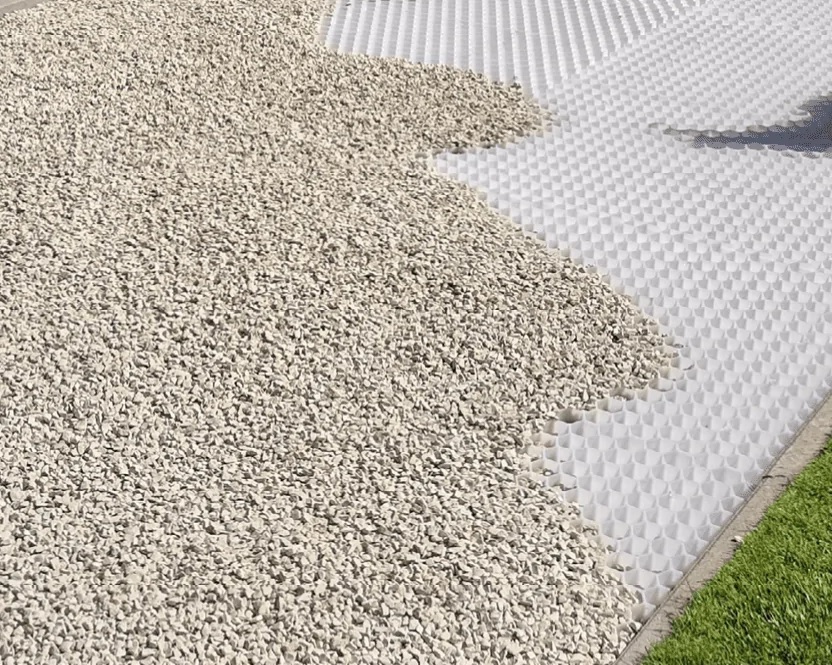Gravel Driveway Advice
Reading time: 4 minutes
How do you look after a gravel driveway?
Firstly, gravel driveways often require less precision than block paving, tarmac or concrete. While you may find that stones shift and leave gaps or potholes, it’s a simple case of filling these in with more stones or re-levelling out with a garden rake. It’s that easy.
What gravel is best for driveways?
When choosing decorative gravel for a drive, it’s a good idea to use self-binding materials, which means it can be pressed flat, binding it to stay in place. There are many types of gravel you can use, but some are better suited than others.
Using 10mm gravel size or less can be compacted tightly, so it doesn’t become too loose, causing it to shift into piles or start to roll away too easily. However, if you choose really small gravel in a driveway, it’s possible for it to get caught in tyre treads. With this in mind, try to avoid anything lower than 6mm for gravel. It’s also a good idea to use dark coloured stones or slate chippings, as this helps to hide any stains or discolouration caused by car emissions or oil.
Are gravel drives good for security?
As a security measure, a gravel driveway creates an extra layer of home security. There’s no mistaking the sound of footsteps on gravel on your property, and gravel can be surprisingly audible at night. Although this can work well, it’s not a substitute for solid locks and security systems made with protection in mind.
Does gravel help with drainage?
Gravel allows for water to drain easily. Even when compacted, it’s still very porous. The benefit of this is that rain will simply soak between the gaps reducing flooding, or large puddles forming. However, it’s still important to ensure that there’s effective drainage to avoid flooding at all.
Keep drains clear of debris to avoid clogging, and ensure that stones are kept level to avoid pooling. If your driveway does have a continual problem with flooding, it’s possible that the drive may have been laid incorrectly from the start. Sloping the wrong way, or uneven surfaces can be culprits. If this is the case, it might be necessary to have the drive levelled correctly, then have gravel re-applied.
How do I keep rocks from washing away?
Even if gravel is compacted enough to stay in place as much as possible, it can still move. This is especially true after rain. So, how can you stop stones from simply being washed off your driveway? The solution is to install gravel parking grids, which hold loose stones in place during wet weather, while still providing effective drainage.
These durable grids can take the weight of a car, laying on the surface of the gravel drive. The grid holds gravel in square sections keeping it from shifting and sliding too far out of place. Parking grids are especially useful on slopes, as the gravel will naturally move down a sloping driveway over time.

Do I need weed control for gravel?
When laying gravel directly onto soil, or even over patches of dirt, it’s still possible for weeds to poke up through gaps. That’s why it’s advisable to lay down weed control fabric first. This reduces the need for ongoing weeding which, when left unchecked, can displace stones and lead to an uneven drive.
What’s the best way to edge a gravel drive?
Although it’s not always essential, giving a driveway edging can make all the difference. It’s not just good for aesthetics, but practical too. A shallow kerb around the driveway helps to hold stones in place, even in harsh weather conditions, and stops gravel from spilling out from the drive itself.
If this has been helpful, we have more useful landscaping advice for you. We’ve put together a series of guides so you can get the best from your home and garden.




